“Joshua, Stop Your Crying” – An Interview With Director Joshua Oppenheimer
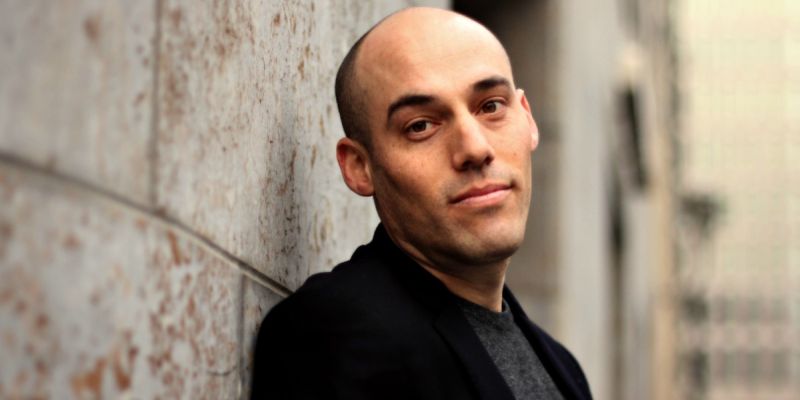
Alistair is a 25 year old writer based in Cambridge.…
The Look of Silence, the harrowing companion piece to The Act of Killing, was released earlier this year to universal acclaim. With the film about to be released on streaming platforms in the US, with a ton of awards nominations heading its way (including a place in the shortlist for Best Documentary at the Oscars this year), Film Inquiry spoke to director Joshua Oppenheimer about the past decade in his life making these films, as well as the new form of documentary storytelling he has pioneered.
Alistair Ryder for Film Inquiry: Firstly, I just want to start the interview by saying that I haven’t revisited The Look of Silence since I saw it in theatres over the summer, due to it having such a profound impact on me. I was wondering if the experience of making these films has had a similar affect on you, that you can’t go back and revisit any aspects of them?
Joshua Oppenheimer: No, I revisit the films all the time because they have been my life for the past ten years. I’m not watching them all the time, but now my life is dominated by talking about them – I’m still in touch with the family in The Look of Silence every day, my anonymous Indonesian crew most days, I’m in touch with Anwar, the main subject from The Act of Killing, very regularly.
When I’m setting up other projects I find myself looking back at what I did, what worked, what I learnt from the journey and how to apply those experiences to future projects. One of the big lessons from both films is that we cannot escape from our pasts, we are our pasts and they are what make us who we are. The last decade of my life has been mostly dealing with the lies the perpetrators have told themselves and then imposed upon a whole society so they can live with themselves and maintain their power, to justify themselves in front of families whose loved ones have been killed. I am always going to be immersed in this world even though I am moving on to new work.
AR: One of the sequences that shocked me the most that touches on what you say about people telling themselves lies in order to force themselves to believe them. It’s of an NBC news broadcast praising the efforts of the perpetrators of the war crimes for killing alleged “communists”. Over the decade of making these films, have you have come to any sort of conclusion as to why international reporters would have this unjustified bias in their reporting?
Oppenheimer: There is a key moment in the sequence that you are talking about that offers an indirect reason as to why it would be reported in this way. The most chilling part of that NBC documentary from 1967 isn’t so much the reporting on the killings, but the moment we see a Goodyear rubber plantation whose management techniques are described with some admiration by the journalist for the use of slaves drawn from death camps to help make the latex that goes into Goodyear’s tires.
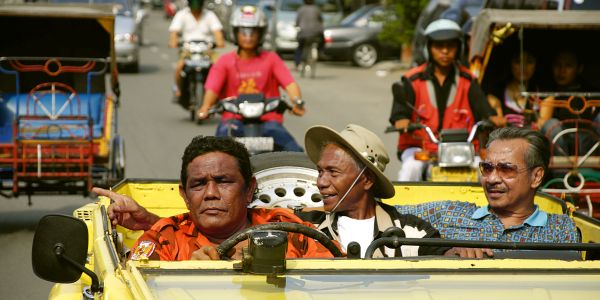
This is of course what German corporations were doing 20 years earlier in Auschwitz, only German radio was broadcasting that widely and marketing it as the best economic choice for German corporations. This should give us all pause and wonder whether ideological anti-communism was the real reason for American participation in the genocide, or whether it was an excuse for wholesale and murderous corporate blunder.
I might say it is an excuse like the excuses the perpetrators tell themselves, but I’m not saying it isn’t an excuse for the policy makers in the United States who were the architects in the US participation in the genocide. I’m not saying the policy makers didn’t believe there wasn’t a part of themselves that were rationalising policies that were ultimately at the behest of their patrons and supporters within the business community.
Ultimately, I think I’m talking about an eternal contradiction in belief here, which you see in both my films, with all the perpetrators telling themselves lies and stories to justify their stories; you can see they don’t believe those lies, but there’s a comfort in them. In the director’s cut there’s a sequence where Anwar Congo and Adi Zulkadry are watching a government propaganda film that was shown to every school child in Indonesia, not unlike what is being taught to Ari’s children in The Look of Silence.
These films and lessons depicted the graphic nature of the killings in the most shocking way and they would be shown as part of the curriculum on an annual basis to all Indonesian school children. In the sequence in The Act of Killing you see Anwar Congo panic when being told that the films represent a lie, claiming that although it may be a lie, it is the one thing that makes him feel better about what he’s done.
What is crucial to take from this is that all the perpetrators, from the lowest ranking death squad member to the highest ranking army general, as well as international supporters of this regime like the CIA, all are only able to participate depending on their ability to lie and falsely justify themselves.
Of course, until the perpetrators are removed from power and until there’s any acknowledgement that the actions committed were wrong, the perpetrators will continue to cling to these excuses so they can live with themselves and the society they have built. This goes back to your question about the US reporting, as the US government talked about it this way. As for the US media reporting, if the White House says this is good news, it is reported that way, which accounts to why the genocide has been forgotten in part. How does a mass murder of hundreds of thousands, if not millions, of people qualify as good news? People hear it, it doesn’t really make sense, they feel they are confused as to whom they are to sympathise with – the perpetrators or the killers? That doesn’t sit well with them, whilst the story that was being reported felt entirely incoherent.
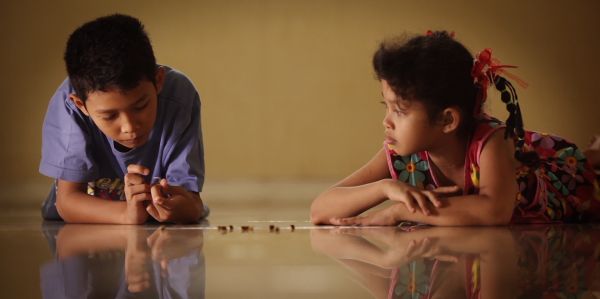
The other reason the story has been forgotten is because the US government talked about it as good news for a limited time. Even if that meant there was positive coverage in the New York Times and Time magazine describing it as “The West’s Best News for Years”, very soon the government stopped talking about it because the so-called victory in Indonesia undermined the rationale for the Vietnam war.
The increasing military involvement by the US in Vietnam in 1965 was being sold to the American people using the risk of communism spreading across South East Asia. The real prize in South East Asia was always Indonesia- it had the biggest population, the most resources and was significantly Australia’s border frontier. Yet from 1965 there was no real risk of the Indonesia domino theory, it was bolted upright to the table because the political left had been annihilated, so the government stopped talking about it because it was an inconvenient theory in the build-up to the war in Vietnam.
AR: Whilst making the films and you were being greeted by the perpetrators of the crimes and the lies they told themselves, how did you manage to maintain subjectivity and not confront them? The Look of Silence is all about Adi confronting them about their crimes, but with the emotionally heavy nature of the subject, how difficult is it to to hold back when presented upfront with many of the testimonies here?
Oppenheimer: In a way, you could argue that by making these films in the first place was my way of confronting them about their crimes. After Adi, his family and the survivors around them urged me to film the perpetrators back in 2003, I felt entrusted by them to film every perpetrator I could find. The scene that was most affecting to me in that early period of filming was the scene with the two men where they take me down to the river, which is played in The Look of Silence.
Shooting that scene led me to realise that I would make two films – however, this was back in January 2004, over a year and a half before I met Anwar Congo and began to conceive the reality of The Act of Killing. Even then I knew there should be two films – one about the perpetrators and how they see themselves and their society, as well as one about survivors and what it is like for them to live in a society fundamentally based on lies.
I knew the two films would complete one another, so it was a very emotional moment for me, for them to take me to the spot where the army killed 10,500 people and seeing them play victim and perpetrator, indirectly finding out this is where they had killed one of the family that had entrusted me to film the perpetrators. I was crying filming this scene, holding the camera as a shield to protect myself – I just wanted to run away.
The moment in The Look of Silence where they stop their frantic boasting and help themselves down the slippery, grassy embankment leading to the river made me feel like I was in the eye of the hurricane. It was like walking into Germany 40 years after the holocaust only to find the Nazi’s still in power, completely unchallenged.
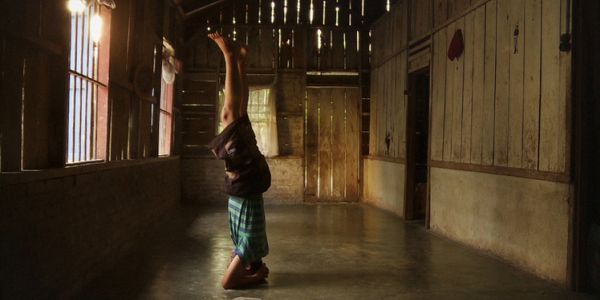
It really captured what was so upsetting to me about this; as I went home that evening I noted down that there should be two films, dealing with these two aspects of impunity that were described. I continued filming every perpetrator I could find until I met Anwar Congo, but I didn’t confront people at that time I was still trying to figure out how, where and why these crimes happened. I was working my way up the chain of command simply to try and understand.
When I met Anwar, I met somebody who was unable to hide their pain; he would do the same boasting as everybody else, but here I felt it was to banish the pain that arises from living with having killed. It was here that I realised the boasting wasn’t due to pride, but as an act of defence – which in that moment, made instant sense to me that that was what all boasting represents. You think of the feeling you have when you boast, not when you are genuinely proud of something, but when you really know in your heart of hearts you are boasting and trying to feel purposefully glad about something. We boast because we are small and defensive, we feel insecure because we know we’re small.
When I saw these traits in Anwar I lingered on him, I lingered on the boasting and the remorse and how they are two sides of the same coin. I responded by indirectly confronting him – I didn’t tell him I was horrified by what he was telling me, but I showed him the footage of himself to see if he would recognise the pain in himself during the footage and he does. He’s upset, he looks like he’s disgusted, but he doesn’t dare do anything other than lie to himself. I kept confronting him with this material in each successive effort with more elaborative staging I would screen it back to him – it became more surreal, yet it also started to help him open up to me about his nightmares. As soon as he started telling me about them I started opening up in return about how everything was giving me nightmares too.
There’s a sequence in the Director’s Cut of The Act of Killing where Anwar butchers a teddy bear in a film noir pastiche; it is one of the most chilling scenes in the movie to me. Whilst we were filming it, Anwar said to me “Joshua, stop your crying”. I wasn’t hiding my emotions – after he opened up to me after a month of filming into our five years filming together, I was able to open up about my pain and fear to him.
I think he found that comforting, which is why I think he continued to make the film despite the numerous warnings from friends and colleagues that he should stop, as someone was finally listening to his pain and his implicit acknowledgements of guilt. Not responding all these years, even if he always condemned these acts, has made him feel guilty about what he’s committed – but I kept treating him like a human being and not a monster despite the need to confront him over his actions and I think that was comforting for him.
AR: With this in mind, did it worry you when The Act of Killing was screened for the first time and a small handful of critics felt that it was exploitative? Were you also worried that about audiences equally clinging to this false representation of your film?
Oppenheimer: The main criticism the film received was that I was giving war criminals a platform, which is entirely untrue. A platform is something you stand on to say your point, then step off directly after you have made it. Anwar knew from the beginning that he would not have directorial or editorial control over any of the footage, he always knew that he was solely contributing to my film.
Nobody who has ever seen The Act of Killing, including any of the critics, has ever come away thinking that these men are glamorous or justified in their actions in any way. I remember when the most prominent of these pieces criticising the film was published in The Guardian in the UK, there was an outpouring of response from Indonesians in the comments, all of them criticising this point of view, asking how somebody could see this film and draw such an incorrect judgement from it.
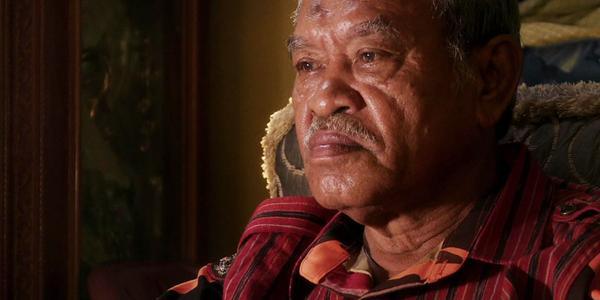
The only people inside Indonesia who criticise this film are the government and the military themselves – nobody sees this film and thinks the perpetrators have a platform. I think what really is happening is that viewers are being asked to approach a man like Anwar through my intimacy with him and within that intimacy are trying to comprehend how human beings can do this. How they have built up a web of lies that justifies and naturalises what they have done and how when they are victorious they build an entire culture that justifies what they have done and naturalises atrocity. All it does is pave the way for a recurrence of such atrocities, now that its naturalised – really, this is what the film is about. The moral vacuum that becomes inevitable when a regime is built by perpetrators and the lack of acknowledgement that any of these actions are in any way wrong.
AR: Both films are very cinematic experiences – The Look of Silence frequently reminded me of the recurring motif in Terrence Malick’s The Thin Red Line, as nature co-exists peacefully with mankind despite the atrocities of war unfolding. I was curious as to whether you had any cinematic reference points when making the film, or if you just approached the subject in a journalistic manner?
Oppenheimer: It’s very important to me that both films immerse you in a world. If you see the director’s cut of The Act of Killing you’ll notice it is punctuated by these abrupt cuts to silence; moments when you see abrupt shifts from perspective, from the perpetrators to the absence of those who were killed. In these moments you can feel the ghosts haunting the landscape.
When I made The Look of Silence, after the editing of The Act of Killing but before it received its premiere, at which point I realised I couldn’t return to Indonesia safely anymore, I knew I wanted to take the viewer back to these same haunted spaces that are so frequent in the director’s cut. I wanted to make the viewer question what it would be like to live in a society and have to rebuild your life in the shadow of the men who killed your loved ones.
So with The Act of Killing director’s cut there are moments it resembles a flamboyant fever dream and not a documentary at all; I felt The Look of Silence should be equally experimental with the documentary form, but without this flamboyance. It is dealing with something quiet – fear and silence, whereas Act of Killing is about the themes of escapism and guilt that require a more heightened approach to telling the story.
I felt with The Look of Silence I needed to make a film that was precisely complimentary to The Act of Killing and it would be a kind of poem about memory and oblivion. So I thought about the filmmakers who have become adept and efficiently visually precise to be able to make the most subtle faces of invisible forces manifest and become visible for a viewer.
There were two filmmakers who were vital when studying the look of the film – firstly, Robert Bresson, for his precision and his ability to isolate the tiniest detail that would otherwise be overlooked. The other filmmaker was Yasujirō Ozu, whose films I studied in preparation for making the confrontation sequences – his films seem to be about dialogue, yet everything is said in the silence.
In preparing The Act of Killing, I wanted to take the viewer into an entirely new cinematic landscape, so influences were far more difficult to pin down. What makes non-fiction filmmaking so special is the collaboration between filmmaker and subject, occasions have been created when true lives are being revealed through a performative engagement with the camera, and I want you to be immersed in that space and not relating to an abstraction or a pattern in the filmmaking style. So a more journalistic style would ultimately create a film that functions like a mirror, a window into a far-off place and I really wanted to make something that would work on this level.
It felt that it would be ideal to create a film smaller in scope, to focus on one family and immerse you there, to train my eye on the smallest traces with visual details like a furl in Adi’s mother’s brow or the draft of wind blowing through the cobweb in the corner. This makes it feel more personal and relatable, as opposed to a journalistic window to a specific place. In making it universal in that way I hope Adi becomes you and you feel what it is like to be in these people’s lives.
AR: Recently there has been a influx of narrative features, such as The Walk and The Program, that have unsuccessfully tried to turn acclaimed documentaries into feature films. As a documentary filmmaker, what do you think about this practice and do you think it could create an equally worthwhile work of art?
Oppenheimer: It’s really hard to say whether or not it could create a work of art, but what I would say is the fundamental difference that people fail to take into account is that non-fiction filmmakers ultimately have undeserved inferiority complexes when only fiction filmmakers are described as “storytellers”, even though we are telling stories from real life. To say that is to somehow overlook what is really special about non-fiction, as we are watching real people and going through things that are changing their lives and I think there is something sacred about that material that is created.
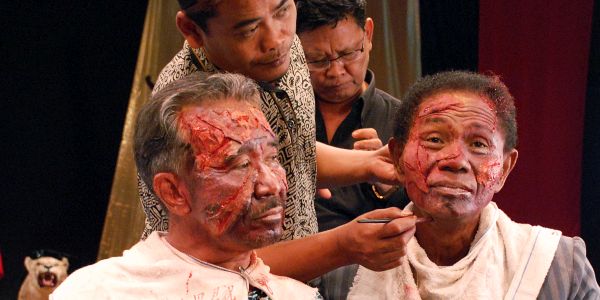
I feel it is sacred because it shows the art of transformation in somebody’s life and viewers empathise with it differently that they would with a fiction film. Take The Act of Killing for example – there I encountered boastful perpetrators who were celebrated in the media and were willing to talk openly, but may harbour some terrible guilt. This story isn’t told by narrative demands that they are “evil”, but by them being human beings who know the difference between right and wrong coming to terms with having committed heinous crimes.
In that sense the morality is part of a mechanism of evil. I see this situation and wonder what would get the poetic truth of this impunity better than having one death squad creating a musical celebrating what they’ve done, being forced to see their self-deceiving narratives made explicit, succeeding in making apparent what they were avoiding to look at?
If you wanted to make a fiction film based on this, you could make one about death squads with impunity making a musical, but it would be ridiculous and nobody would believe it – it’s utterly absurd! As the audience knows this is real even if the reality presented is staged in a heightened manner, it makes visible the previously invisible forces at work here. This is a reality created for the film, but it is one the audience believes is real – and that changes how we feel towards it. When we are watching powerful non-fiction material, a tightly-knitted story may come to resemble that of a Hollywood film, there may be some vanishing point where see them converge – but this convergence will always be that of a fish and a dolphin. They’ll look similar but they are fundamentally different.
AR: Would you ever consider making a fiction film?
Oppenheimer: I would consider it, but I’m more taken by the theme explored in The Act of Killing, of allowing real people to play themselves and are given freedom to speak their own fictions and desires. Suddenly the non-fiction film camera makes visible the stories and the kaleidoscope of fantasies the subjects are telling themselves.
This documentary style could be easily applied to other scenarios, but still bring insight into the way our society is prostituted through fiction, stories borrowed from television, cinema and advertising and how the subjects relate to them. By acknowledging this a whole new form of documentary filmmaking is possible. The Act of Killing presents this new form we haven’t seen before, with these fantasies presented as cinematically as possible, so the real fictions that inform who Anwar is have transported the viewer in the same way as when he watches the scenes afterwards.
The Look of Silence is now available on iTunes, Amazon and various VOD platforms in the US.
Find Alistair’s review of The Look of Silence here.
Does content like this matter to you?
Become a Member and support film journalism. Unlock access to all of Film Inquiry`s great articles. Join a community of like-minded readers who are passionate about cinema - get access to our private members Network, give back to independent filmmakers, and more.
Alistair is a 25 year old writer based in Cambridge. He has been writing about film since the start of 2014, and in addition to Film Inquiry, regularly contributes to Gay Essential and The Digital Fix, with additional bylines in Film Stories, the BFI and Vague Visages. Because of his work for Film Inquiry, he is a recognised member of GALECA, the Gay & Lesbian Entertainment Critics' Association.













